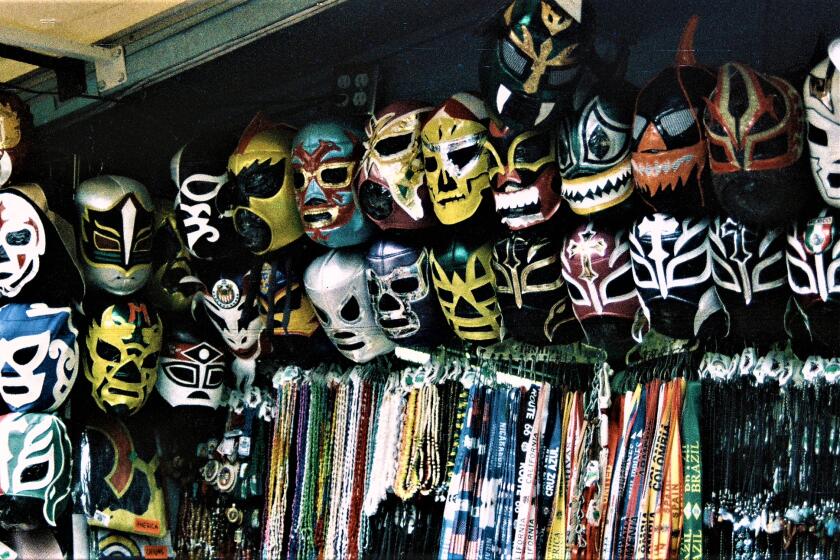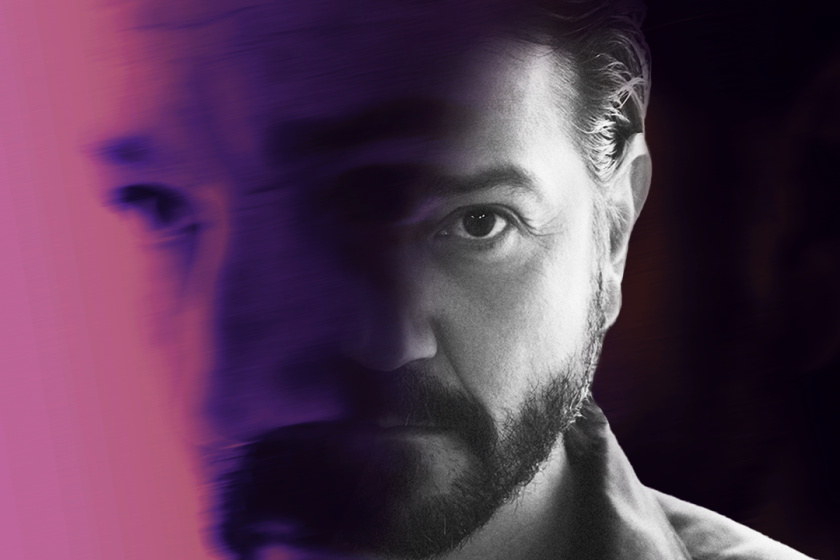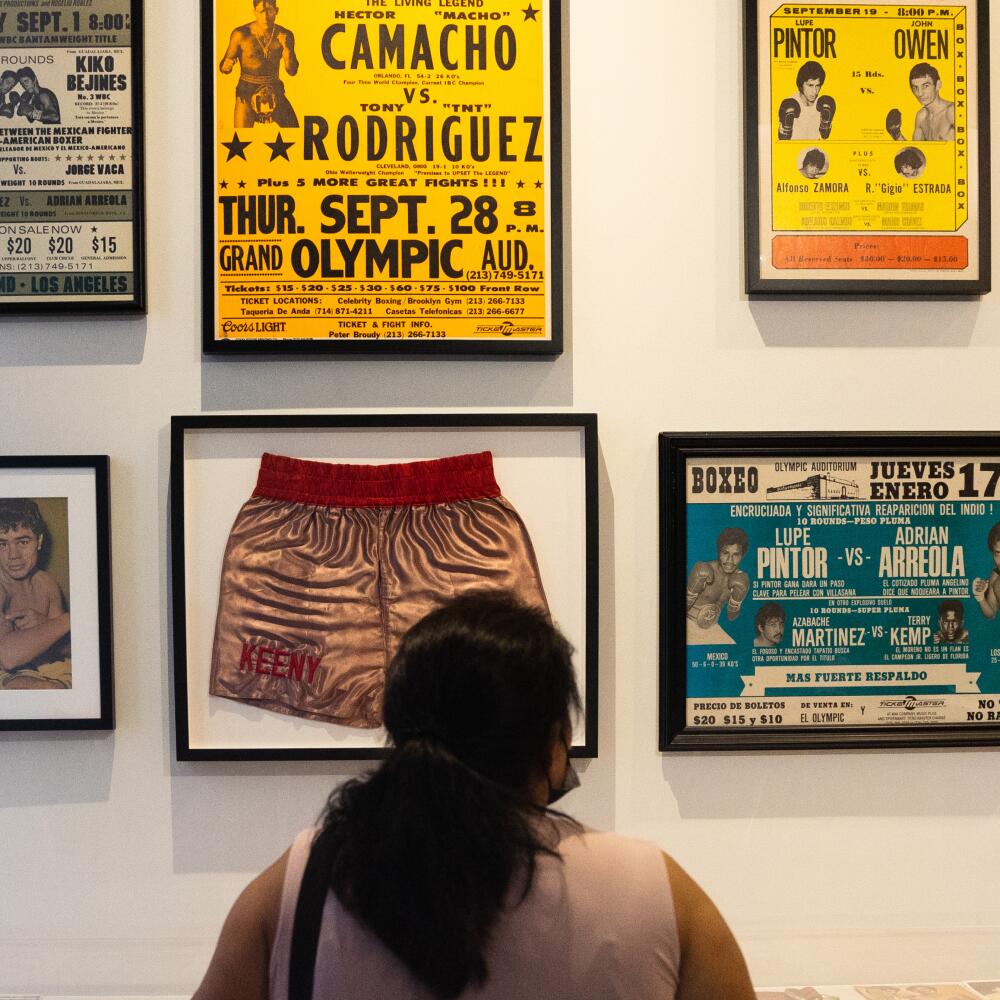
- Share via
For much of its existence, the building on the corner of 18th Street and Grand Avenue, found just south of the 10 Freeway, was a place for contained violence.
It’s where wrestlers like Roddy “Rowdy” Piper and the Guerrero family built their legends, and where boxers like Julio César Chávez became champions. It was the home of roller derby in Los Angeles.
From the glory days of the Olympic Auditorium to Rey Mysterio’s WWE Hall of Fame induction at Wrestlemania 2023, here’s a brief history of lucha libre in Los Angeles.
For decades, the Olympic Auditorium was a hub for sports and entertainment in Southern California — it eventually earned the nickname the “Madison Square Garden of the West.”
Though the building became a Korean American church in 2005, the history made inside is being preserved in a new exhibit at LA Plaza de Cultura y Artes.
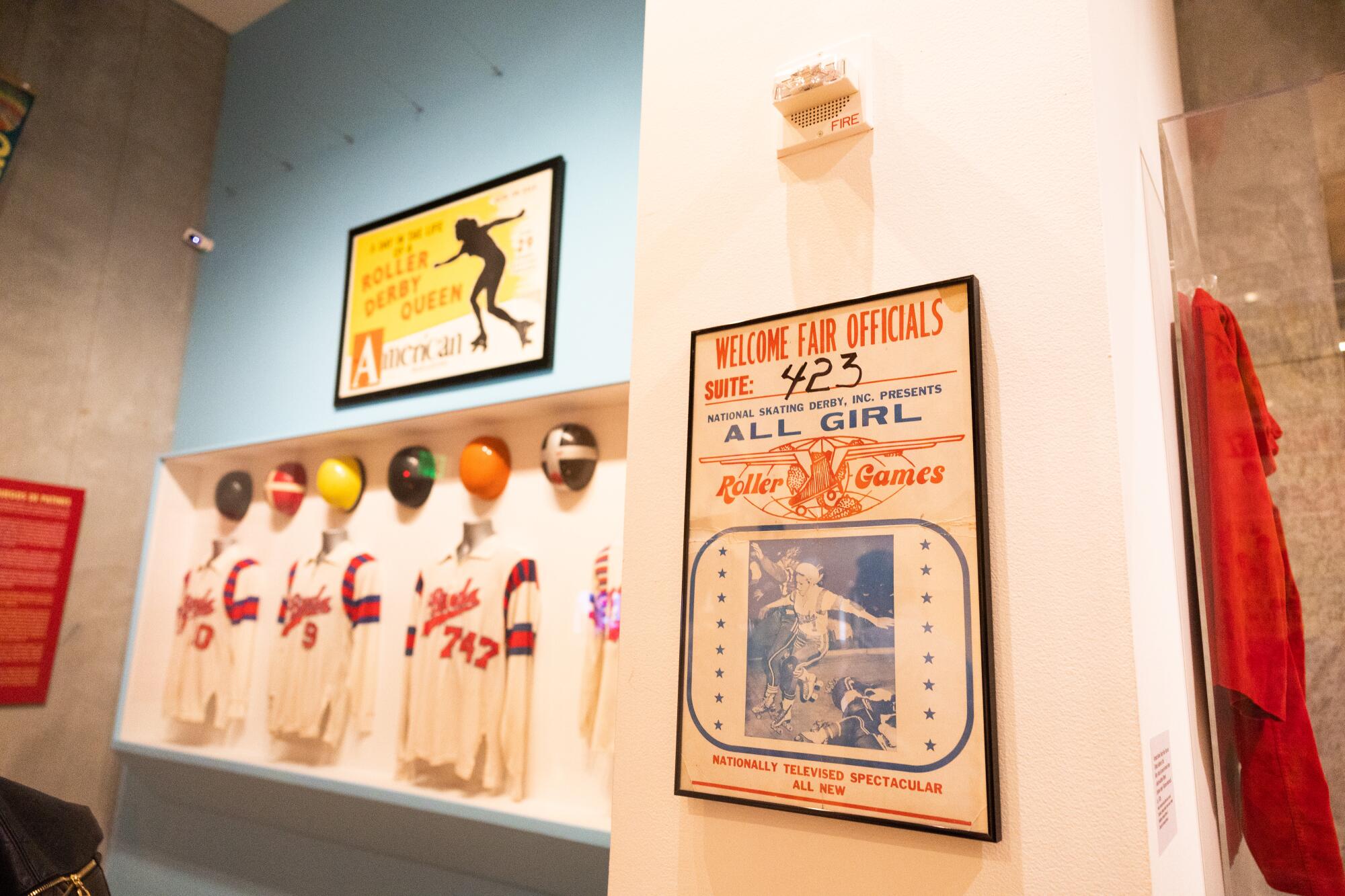
“18th & Grand: The Olympic Auditorium” brings memorabilia, photographs, illustrations and relics of a place that put L.A. on the country’s sports map.
The multimedia exhibition, inspired by the 2021 documentary film of the same name, can be seen for free at LA Plaza until May 2024.
Break dancing was created in the Bronx by Black and Puerto Rican youth during the 1980s and has since expanded to the world.
“It’s not just about the untold stories, but also about preserving it, because this information is not out there as much as it should be,” said Esperanza Sanchez, LA Plaza associate curator.
The auditorium opened in 1925 in preparation for the 1932 Summer Olympics in L.A. The venue became popular with the Mexican and Mexican American community of Los Angeles, who would fill the 10,000-seat venue to support boxers and wrestlers who shared their heritage.
People from African American, Japanese, Korean, Filipino, Jewish and European communities also frequented the Olympic Auditorium, which made it a true melting pot in the city of L.A.
“My favorite thing about this space was that it was a maker and a creator of Black and brown heroes that didn’t otherwise exist,” said Karen Crews Hendon, senior curator at LA Plaza, adding that the Olympic Auditorium broke down stereotypes and uplifted and empowered communities of color.
Among the heroes forged at the auditorium was boxer Danny “Little Red” Lopez, who was of Native American, Mexican and Irish descent. Lopez was a world champion known for his punching power and the bright red headdress he wore before and after his fights.
“Diversity was the most powerful thing that drew everybody in,” Hendon said. “The fact that everybody could come together, regardless of the background, is what creates a synergy that lives on in everybody’s memories.”
No history of the Olympic Auditorium would be complete without giving the proper recognition to Aileen Eaton, a trailblazing boxing and wrestling promoter for 38 years who influenced icons like Muhammad Ali and Gorgeous George. The documentary and exhibit pay homage to a woman who paved her own path in a male-dominated world. Stephen DeBro, the film’s director, says many were shocked to see a woman work out of a place described as violent and rowdy.
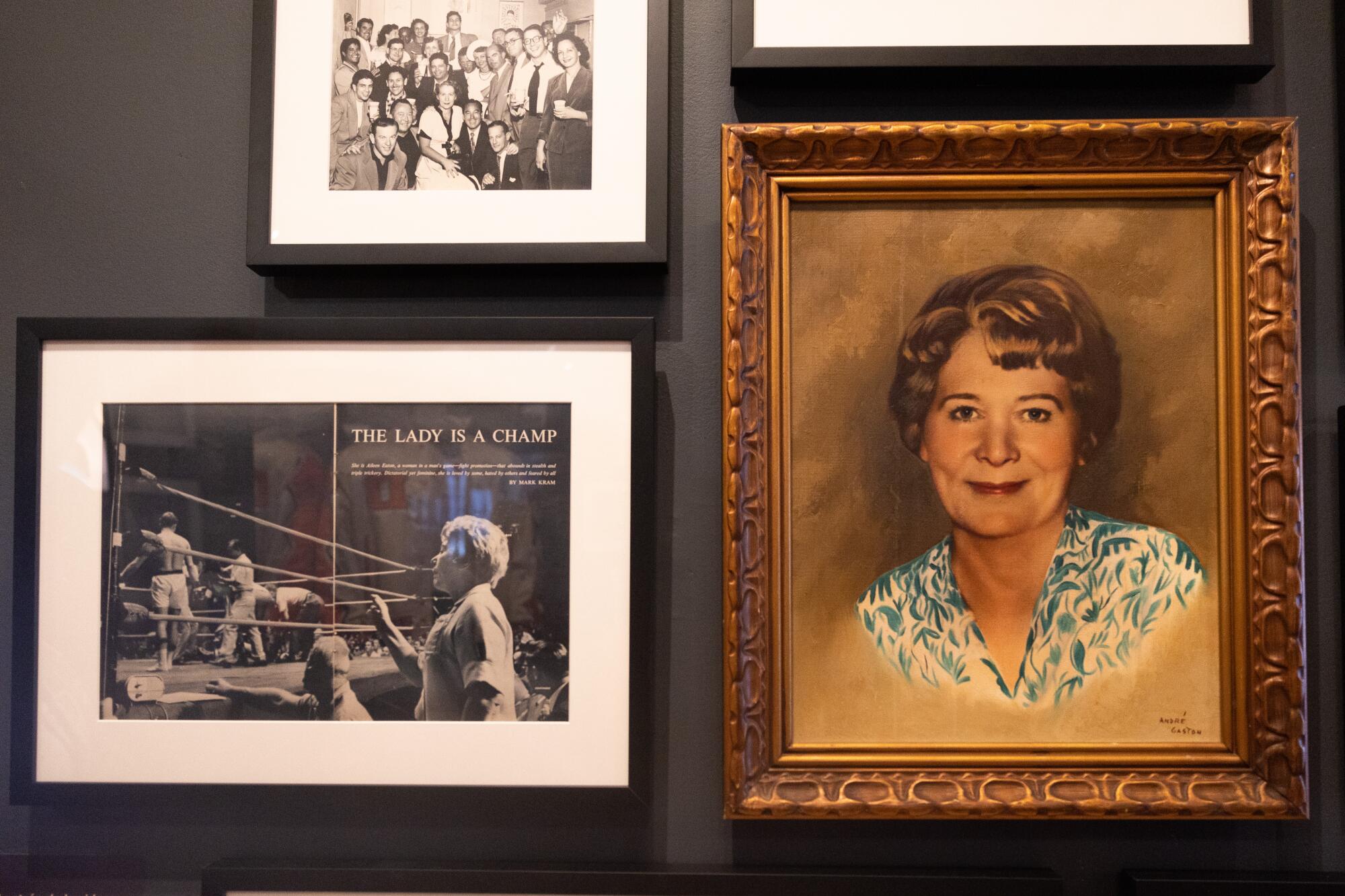
A native Angeleno, DeBro recalls learning about the auditorium while watching TV as a kid. He said the film took years of community outreach to make, tracking down families to collect their stories.
It also required a lot of digging. “We were combing through basements and moldy funky situations to get to things,” DeBro said.
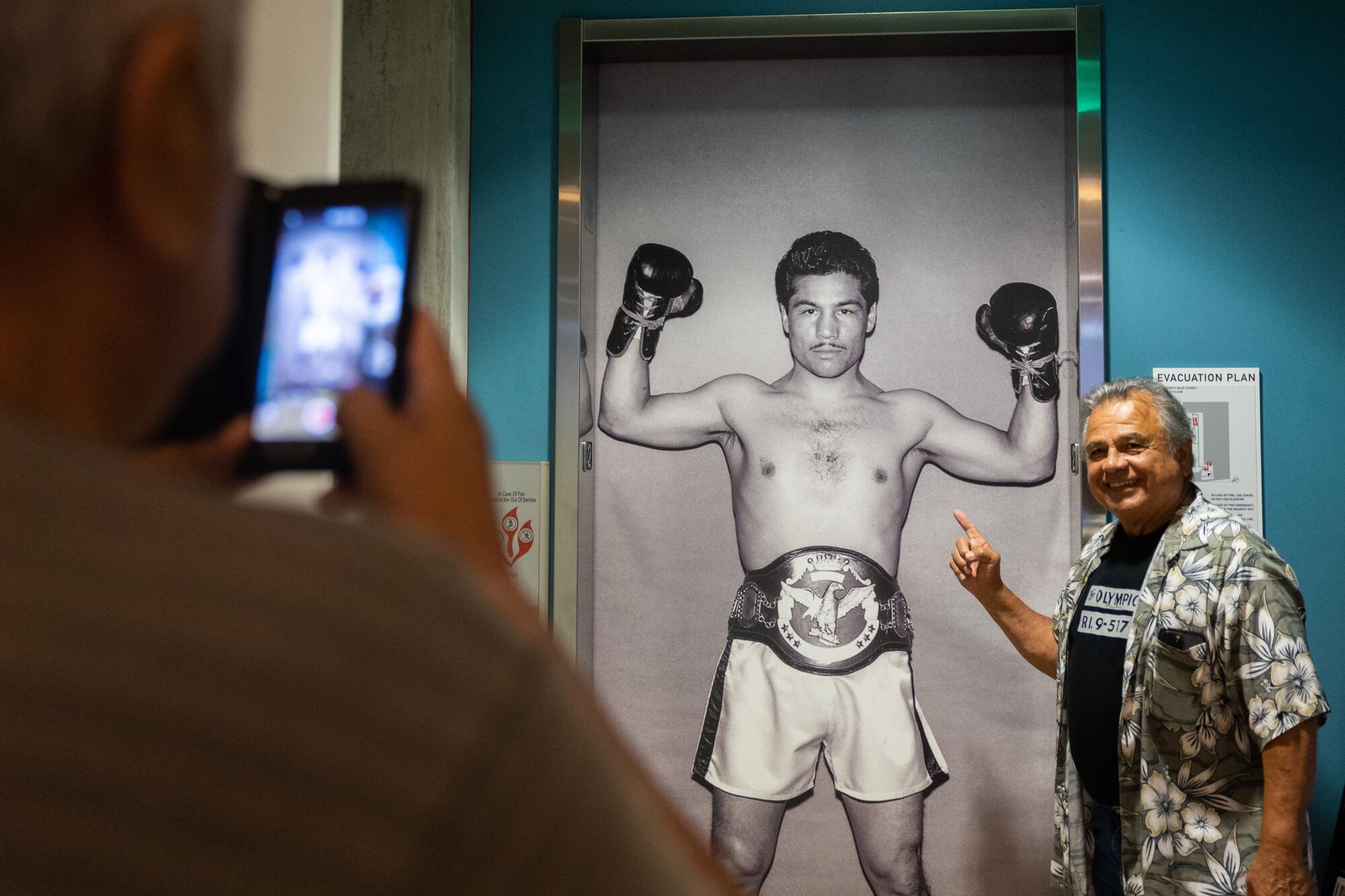
Although many of the sporting icons are no longer alive, the filmmaker says their families remember what the space meant to them and their loved ones.
“There’s a lot of appreciation that these stories were being forgotten because they were,” he said.
“Very few people have focused on this because it was seen as disposable culture, and I think part of the reason it’s seen as disposable culture was that it was people of color who were the main heroes.”
More to Read
The Latinx experience chronicled
Get the Latinx Files newsletter for stories that capture the multitudes within our communities.
You may occasionally receive promotional content from the Los Angeles Times.

